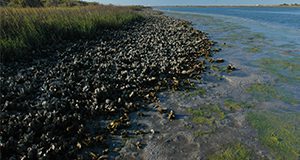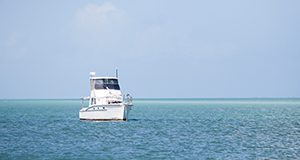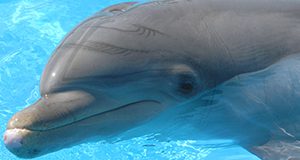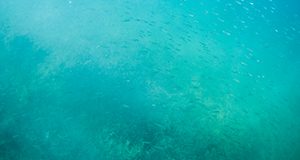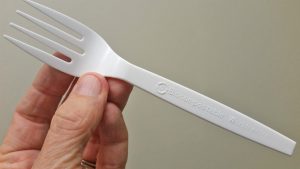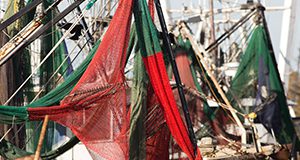This 9-page document is the ninth lesson in the Cetaceans 4th Grade Curriculum. It will help students investigate the roles that blubber, body shape, and body size play in preventing heat loss in marine mammals. Written by Maia Patterson McGuire and Ruth Francis-Floyd, and published by the UF/IFAS Veterinary Medicine–Large Animal Clinical Sciences Department, June 2019.
http://edis.ifas.ufl.edu/vm234
Tag: Maia Patterson McGuire
Cetaceans 4th Grade Curriculum–Lesson 16: North Atlantic Right Whales and Ship Strikes
This 7-page document is the sixteenth lesson in the Cetaceans 4th Grade Curriculum. It will help students learn why ship strikes are a threat to North Atlantic right whale survival, and what conservation measures are in place to reduce this threat. Written by Maia Patterson McGuire, Jessica Hardy, Brenda Cannaliato, and Ruth Francis-Floyd, and published by the UF/IFAS Veterinary Medicine–Large Animal Clinical Sciences Department, June 2019.
http://edis.ifas.ufl.edu/vm241
Cetaceans 4th Grade Curriculum–Lesson 4: How Big Are Cetaceans?
This 12-page document is the fourth lesson in the Cetaceans 4th Grade Curriculum. It will help students gain an understanding of the size of different cetaceans through engaging activities. Written by Maia Patterson McGuire and Ruth Francis-Floyd, and published by the UF/IFAS Veterinary Medicine–Large Animal Clinical Sciences Department, June 2019.
http://edis.ifas.ufl.edu/vm229
Cetaceans 4th Grade Curriculum–Lesson 12: Identifying Individual North Atlantic Right Whales
This 4-page document is the twelfth lesson in the Cetaceans 4th Grade Curriculum. It will help students learn about the New England Aquarium’s right whale database and match photographs of individual right whales. Written by Maia Patterson McGuire, Ruth Francis-Floyd, and Brenda Cannaliato, and published by the UF/IFAS Veterinary Medicine–Large Animal Clinical Sciences Department, June 2019.
http://edis.ifas.ufl.edu/vm237
Cetaceans 4th Grade Curriculum–Lesson 8: Food Chains
This 6-page document is the eighth lesson in the Cetaceans 4th Grade Curriculum. It will help students identify components of baleen and toothed whale food chains and trace energy flow. Written by Maia Patterson McGuire, Brenda Cannaliato, and Ruth Francis-Floyd, and published by the UF/IFAS Veterinary Medicine–Large Animal Clinical Sciences Department, June 2019.
http://edis.ifas.ufl.edu/vm233
Cetaceans 4th Grade Curriculum–Lesson 3: Researching Individual Whale and Dolphin Species
This 55-page document is the third lesson in the Cetaceans 4th Grade Curriculum. It will help students learn about individual cetacean species through a game. Written by Maia Patterson McGuire and Ruth Francis-Floyd, and published by the UF/IFAS Veterinary Medicine–Large Animal Clinical Sciences Department, June 2019.
http://edis.ifas.ufl.edu/vm228
Cetaceans 4th Grade Curriculum–Lesson 2: Cetaceans–What Makes a Whale a Whale?
This 7-page document is the second lesson in the Cetaceans 4th Grade Curriculum. It will help students learn about general whale and dolphin biology. Written by Ruth Francis-Floyd and Maia Patterson McGuire, and published by the UF/IFAS Veterinary Medicine–Large Animal Clinical Sciences Department, June 2019.
http://edis.ifas.ufl.edu/vm227
Cetaceans 4th Grade Curriculum–Lesson 1: Starting to Learn about Whales
This 14-page document is the first lesson in the Cetaceans 4th Grade Curriculum. It will help students start to learn about whales and practice reading comprehension and writing skills. Written by Maia Patterson McGuire and Ruth Francis-Floyd, and published by the UF/IFAS Veterinary Medicine–Large Animal Clinical Sciences Department, June 2019.
http://edis.ifas.ufl.edu/vm226
Cetaceans 4th Grade Curriculum–Outline
The Cetaceans 4th Grade Curriculum provides a series of individual lessons covering cetacean (whale and dolphin) biology and ecology. The curriculum uses charismatic megafauna to engage students and inspire them to want to learn more. This 3-page document provides a brief overview of the Cetaceans 4th Grade Curriculum. Written by Maia Patterson McGuire and Ruth Francis-Floyd, and published by the UF/IFAS Veterinary Medicine–Large Animal Clinical Sciences Department, June 2019.
http://edis.ifas.ufl.edu/vm225
Cetaceans 4th Grade Curriculum–Lesson 13: North Atlantic Right Whale Migration
This 6-page document is the thirteenth lesson in the Cetaceans 4th Grade Curriculum. It contains information that will help students learn about the migration path of North Atlantic right whales and the ways researchers are studying the movement of these whales. Written by Maia Patterson McGuire and Ruth Francis-Floyd, and published by the UF/IFAS Veterinary Medicine–Large Animal Clinical Sciences Department, June 2019.
http://edis.ifas.ufl.edu/vm238
Cetaceans 4th Grade Curriculum–Lesson 7: How Do Whales Eat?
This 10-page document is the seventh lesson in the Cetaceans 4th Grade Curriculum. It contains information that will help students learn the differences between how baleen and toothed whales feed. Students will also learn how sound waves are used for echolocation. Written by Maia Patterson McGuire and Ruth Francis-Floyd, and published by the UF/IFAS Veterinary Medicine–Large Animal Clinical Sciences Department, June 2019.
http://edis.ifas.ufl.edu/vm232
Cetaceans 4th Grade Curriculum: Lesson 6: Cetacean Behaviors
This 4-page document is the sixth lesson in the Cetaceans 4th Grade Curriculum. It contains information that will help students learn about whale and dolphin behaviors. Written by Ruth Francis-Floyd and Maia Patterson McGuire, and published by the UF/IFAS Veterinary Medicine–Large Animal Clinical Sciences Department, June 2019.
http://edis.ifas.ufl.edu/vm231
Cetaceans 4th Grade Curriculum: Lesson 11: Introduction to Right Whales
This 10-page document is the eleventh lesson in the Cetaceans 4th Grade Curriculum. It contains information that will help students learn about North Atlantic right whale life history. Written by Ruth Francis-Floyd and Maia Patterson McGuire, and published by the UF/IFAS Veterinary Medicine–Large Animal Clinical Sciences Department, June 2019.
http://edis.ifas.ufl.edu/vm236
Bioplastics: a better option for the environment?
Most modern-day plastics are made from petroleum, but several different types of plastics are made from plant or even bacterial sources. This 4-page fact sheet written by Maia Patterson McGuire and published by the UF/IFAS School of Forest Resources and Conservation describes four types of these bioplastics and explains why, even if a bioplastic item is listed as “compostable,” a reusable, washable alternative is often the better choice.
http://edis.ifas.ufl.edu/fr418
Cetaceans 4th Grade Curriculum: Lesson 14: How Do Right Whales Communicate?
This 3-page document is the fourteenth lesson in the Cetaceans 4th Grade Curriculum. It contains information that will help students learn how baleen whales use sound to communicate, and how human-created noise in the ocean may affect their ability to do so. Written by Maia Patterson McGuire and Ruth Francis-Floyd, and published by the UF/IFAS Veterinary Medicine–Large Animal Clinical Sciences Department, June 2019.
http://edis.ifas.ufl.edu/vm239
Cetaceans 4th Grade Curriculum: Lesson 17: How Can We Reduce Threats to North Atlantic Right Whales?
This 13-page document is the seventeenth lesson in the Cetaceans 4th Grade Curriculum. It contains information that will help students learn about ways to minimize ship strikes and whale entanglements. Written by Maia Patterson McGuire and Ruth Francis-Floyd, and published by the UF/IFAS Veterinary Medicine–Large Animal Clinical Sciences Department, June 2019.
http://edis.ifas.ufl.edu/vm242
Cetaceans 4th Grade Curriculum: Lesson 10: Summarizing What We Know about Cetaceans
This 5-page document is the tenth lesson in the Cetaceans 4th Grade Curriculum. It contains information that will help students learn about different types of poetry and write poems to express what they know about whales and dolphins. Written by Maia Patterson McGuire and Ruth Francis-Floyd, and published by the UF/IFAS Veterinary Medicine–Large Animal Clinical Sciences Department, June 2019.
http://edis.ifas.ufl.edu/vm235
Cetaceans 4th Grade Curriculum: Lesson 18: Bringing It All Together
This 6-page document is the eighteenth lesson in the Cetaceans 4th Grade Curriculum. It contains information that will help students develop persuasive essays and corresponding presentations about North Atlantic right whales. Written by Maia Patterson McGuire and Ruth Francis-Floyd, and published by the UF/IFAS Veterinary Medicine–Large Animal Clinical Sciences Department, June 2019.
http://edis.ifas.ufl.edu/vm243
Cetaceans 4th Grade Curriculum: Lesson 15: Technology and North Atlantic Right Whales
This 6-page document is the fifteenth lesson in the Cetaceans 4th Grade Curriculum. It contains information and activities that will help students learn the ways that technology is being used to study North Atlantic right whales. Written by Maia Patterson McGuire and Ruth Francis-Floyd, and published by the UF/IFAS Veterinary Medicine–Large Animal Clinical Sciences Department, June 2019.
http://edis.ifas.ufl.edu/vm240
Cetaceans 4th Grade Curriculum: Lesson 5: Scientific Names: Understanding Where Those Funny Words Come from
This 7-page document is the fifth lesson in the Cetaceans 4th Grade Curriculum. It contains information and activities that will help students interpret the scientific names of certain whales and dolphins. Written by Maia Patterson McGuire and Ruth Francis-Floyd, and published by the UF/IFAS Veterinary Medicine–Large Animal Clinical Sciences Department, June 2019.
http://edis.ifas.ufl.edu/vm230
